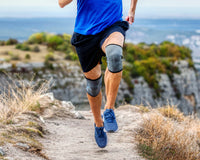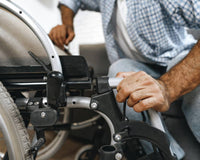Selecting the best oxygen administration mask depends on several factors. Design plays an important role in selecting the most suitable device, although clinical assessment and performance needs will ultimately decide what mask should be used.
Understanding the Basics:
Oxygen masks serve the fundamental purpose of delivering a controlled flow of oxygen to individuals requiring respiratory support. They come in various types, each tailored to specific scenarios.
Types of Oxygen Masks:
- Nasal cannula - a thin tube, often affixed behind the ears and used to deliver oxygen directly to the nostrils from a source connected with tubing. This is the most common method of delivery for home use and provides flow rates of 2 to 6 liters per minute (LPM) comfortably, allowing the delivery of oxygen while maintaining the patient’s ability to utilize his or her mouth to talk, eat, etc.
- Transtracheal catheters - these are used in chronic maintenance therapy and represent a method of oxygenation in which a catheter is surgically inserted through the anterior neck to deliver oxygen directly to the trachea, thus bypassing the upper airway.[8] By bypassing the upper airway, oxygen delivery is closer to the alveoli, bypassing the dead space in the upper airway and allowing for chronic use of lower amounts of oxygen without reducing the amount of supplemental oxygen delivered to the lungs. This arrangement allows for more extended use of supplemental oxygen and allows the patient to be away from home for longer periods but does require surgical placement, with the potential for site infection, irritation, and complications common to such procedures.[9]
- Face masks - facemasks can be generally divided into simple facemasks, air-entrainment masks, and non-rebreathers. A simple facemask is a mask with no bag attached, which delivers oxygen at 5 to 8 LPM. An air-entrainment (also known as venturi) mask can provide pre-set oxygen to the patient using jet mixing. As the percent of inspired oxygen increases using such a mask, the air-to-oxygen ratio decreases, causing the maximum concentration of oxygen provided by an air-entrainment mask to be around 40%. A disadvantage of this and other full-face masks is the inability of the patient to eat, drink, or easily communicate while using such a device.
- Non-rebreathing masks have a bag attached to the mask known as a reservoir bag, which inhalation draws from to fill the mask through a one-way valve and features ports at each side for exhalation, resulting in an ability to provide the patient with 100% oxygen at a higher LPM flow rate.
What is the outlook of Oxygen Masks?
Oxygen therapy can improve a person’s quality of life for many years. Being able to breathe more easily allows a person to engage in more activities during the day, have a better night’s sleep, and potentially a longer lifespan.











